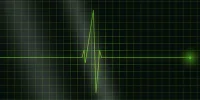Critically ill patients may benefit as much as ambulatory patients from mean pulmonary arterial pressure (MPAP) estimations by noninvasive echocardiography. However, the noninvasive method was not shown to be equivalent to pulmonary artery catheter (PAC) measurement of MPAP, according to a prospective study just published in Critical Ultrasound Journal.
A Noninvasive Method
Researchers conducted a prospective validation study of 53 ICU patients who underwent pulmonary artery catheterisation during hospital admission. The study compared the MPAP measurements by PAC and the estimations generated by transthoracic echocardiography (TTE). In the noninvasive method, the TTE-derived mean right ventricular to right atrial systolic pressure gradient was added to the right atrial pressure measured invasively.
TTE Estimations and PAC Measurements
A total of 23 of the 53 patients had estimable MPAP through the use of TTE. The mean difference in MPAP derived by TTE and PAC was 1.9 mmHg (SD 5.0). The upper limit was 11.6 and the lower limit was -7.9 mmHg. The median absolute percentage difference between the two MPAP measurements was 7.5 percent. Additionally, the researchers assessed inter-rater reliability for 15 of the patients, which gave an intra-class correlation coefficient of 0.96; the 95 percent confidence interval ranged from 0.89 to 0.99.
ICU Challenges
Based on the research team’s predefined clinically acceptable range of plus or minus 5 mmHg, echocardiographic estimates of MPAP in ICU patients was not equivalent to MPAP as measured by invasive PAC. Furthermore, the success of the technique is constrained in critically ill patients due to the challenges of obtaining adequate tricuspid regurgitant time-velocity integrals.
Although estimating MPAP using the TTE method on critically ill ICU patients was not determined to be equivalent to PAC measurements of MPAP in that population, the accuracy of the ICU patient estimations was similar to previously obtained results from ambulatory patients. The report’s authors are Russell D. Laver, Ubbo F. Wiersema and Andrew D. Bersten.
Source: 7th Space Image Credit: Google Images / pvrifiles
Latest Articles
ICU, echocardiography, mean pulmonary arterial pressure MPAP, artery catheterisation
Critically ill patients may benefit as much as ambulatory patients from mean pulmonary arterial pressure (MPAP) estimations by noninvasive echocardiography...










